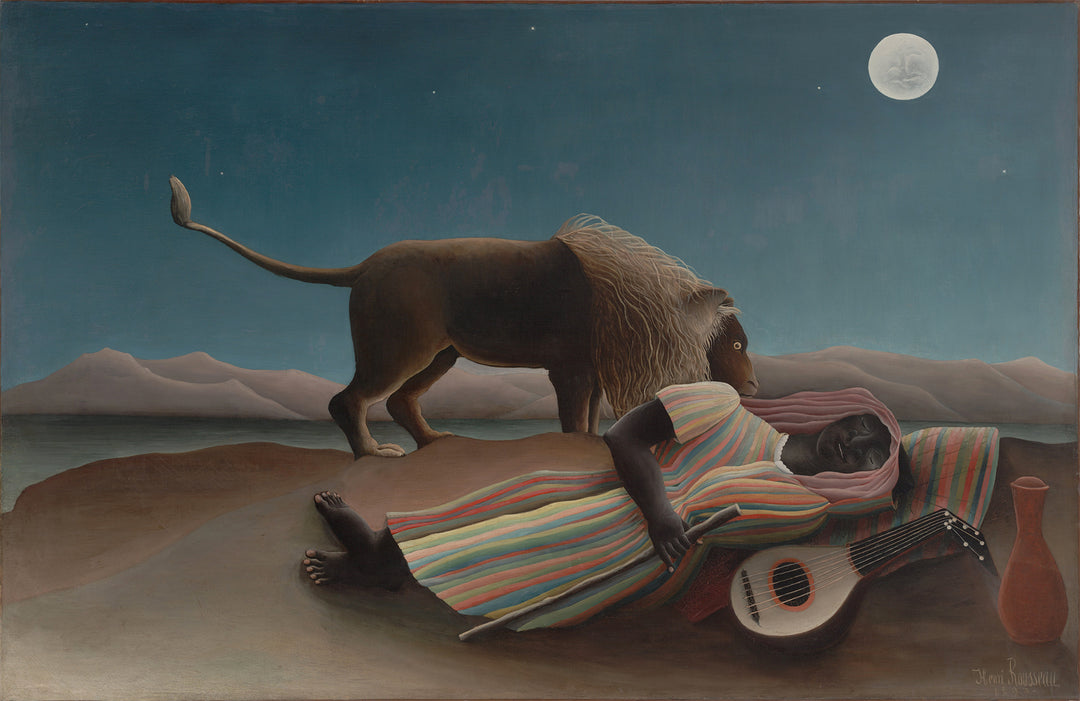
The Sleeping Gypsy - Rousseau
- Oil painting on canvas
- 100% Hand-painted
- View quality of this painting
- Shipping
- Return Guarantee
| Author: | Henri Rousseau |
|---|---|
| Title: | The Sleeping Gypsy |
| Original location: | Museum of Modern Art, New York, USA |
| Year: | 1897 |
The painting "The Sleeping Gypsy," created in 1897 by Henri Julien Félix Rousseau, is a clear example of naïve art, characterized by technical simplicity and direct representation of themes. In this work, a woman lies asleep in the middle of a desert, while a lion seems to watch her in a scene filled with mystery and symbolism. The asymmetrical arrangement of elements in the composition, such as the human figure and the animal, creates a sense of tense calm that has been interpreted in various ways, from vulnerability to tranquility in the face of the wild.
Rousseau, removed from academic techniques, manages to recreate an atmosphere where the apparent naivety of the brushstroke contrasts with the emotional depth of the scene. The use of flat colors and simple geometric shapes evokes a primitive vision of the world but also reveals a symbolic complexity that connects with the subconscious. This balance between the dreamlike and the real shows the influence Rousseau would have on later movements, such as Surrealism. The solitude of the gypsy, her stillness under the night sky, and the silent stalking of the lion create a visual narrative full of enigmas, where silence is the protagonist.